Author: Xiaodong Xu
On December 5th, NIO’s flexible battery upgrade opened up extensively.
In fact, as early as April 18th of this year, the flexible upgrade service for the long-endurance battery pack (100 kWh) was already available annually.
This battery upgrade allows NIO car owners to choose from two flexible upgrade ways: “monthly” and “annually”, and, as part of the NIO power energy service system, comes at a cost of 880 yuan per month for monthly upgrades and 7,980 yuan per year for annual upgrades.
This flexible battery upgrade provides NIO car owners with more options for range selection. For example, if a car owner wants to go out for a self-driving trip in the summer, upgrading to a 100-degree battery can extend the driving range, while a 70-degree battery is sufficient for commuting in the city center in the winter.
The benefits of flexible battery upgrades are self-evident, and in view of this, NIO plans to introduce a 150-degree battery pack next year, providing even more options for car owners.
Of course, all of this is due to NIO’s energy system, NIO Power.
NIO Power
Since its inception, NIO Power has been a topic of discussion.
In 2018, three months after its birth, NIO Power faced its first challenge and became a laughing stock in the “dairy car incident.”
In brief, a group of NIO ES8 owners embarked on a journey from Guangzhou to Xinjiang. However, due to an inadequate charging infrastructure in Inner Mongolia at the time, NIO chose to dispatch a mobile charging unit to follow the ES8 to ensure the car could reach its destination. Later, there were also instances of support vehicles following long-distance drives, and some even calculated that the ES8 needed 35-40 liters of diesel per 100 kilometers.
At the time, there were many who were skeptical of NIO’s statement that “charging is more convenient than refueling.” In order to achieve this goal, NIO chose to address the issue from five directions: battery swapping stations, supercharging stations, destination charging piles, home charging piles, and charging vehicles, all while providing a one-stop charging service to ensure everyone could enjoy the convenience of charging as much as possible.
However, battery swapping, even to this day, is still a topic of debate.
The first-generation battery swapping stations could only store five batteries, and users had to get out of the car and hand the car over to the staff for swapping. This made many people wonder: would five batteries be enough? How could the operating costs be reduced with manual operation?
Amidst the objections, the second-generation battery swapping station was introduced: capable of storing 13 batteries, swapping up to 312 cars per day, and requiring no staff or vehicle exit for the swap. However, skepticism remains, as the times have changed.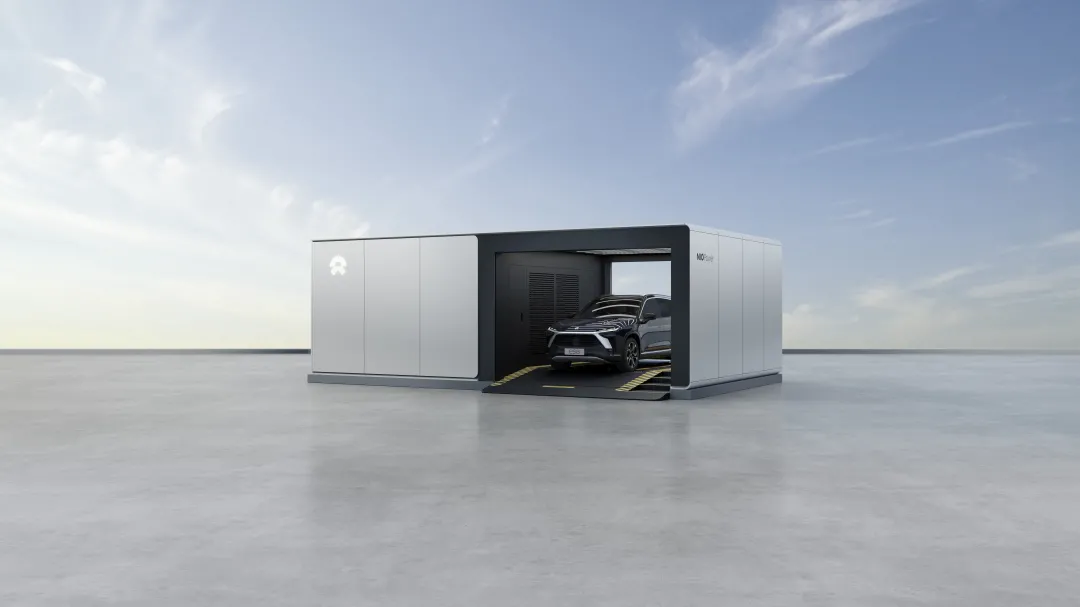
Higher voltage, larger current, and higher power supercharging stations are constantly emerging. This year, XPeng and GAC even launched a 480 kW supercharging station that can charge for 5 minutes and continue to travel for 200 kilometers.
So what is the significance of battery swapping?
Firstly, it’s efficiency.
Even the fastest charging speed cannot fully charge a battery in 5 minutes, which is the biggest advantage of battery swapping. Even the efficiency of a 480 kW supercharging station mentioned above is still lower than that of battery swapping. Moreover, the popularity of 480 kW supercharging stations in the next few years is bound to be low, after all, the popularization of 800V platforms will not be until after 2024, and the construction of infrastructure may be even longer.

Battery swapping is the only solution that can make the charging speed of electric vehicles comparable to that of gasoline vehicles. Especially on high-speed roads, space is limited, and the number of charging stations that can be laid out is even more limited. Therefore, during peak demand periods such as holidays, battery swapping stations may become the best solution.
Think about it carefully, gas stations can be accepted by everyone, why not battery swapping stations? Their functions are the same, they are both specific products, and their purposes are the same. The only difference is that all gasoline vehicles can refuel, but not all electric vehicles can swap batteries.
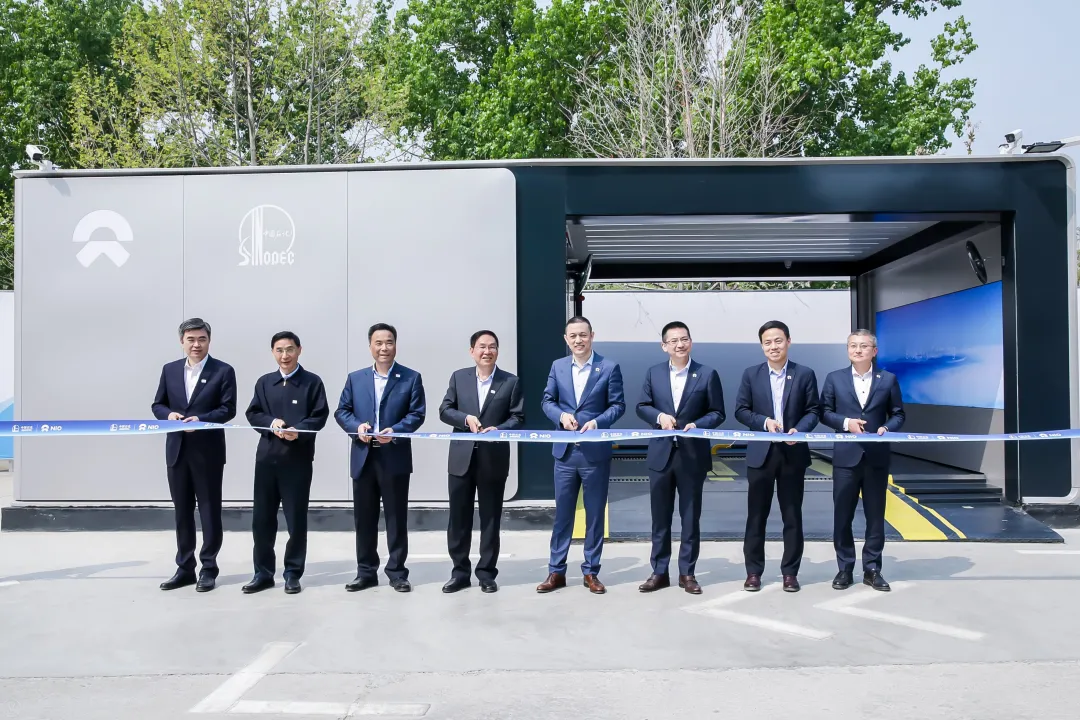
From a broader perspective, battery swapping is also heavily supported in national policies. NIO’s trading price of nearly 400,000 yuan still enjoys subsidies because of battery swapping. All major car manufacturers also have plans to build battery swapping cars. The difficulty lies in the fact that few car manufacturers are willing to invest in battery swapping, and it’s difficult to balance battery swapping specifications. Is building a charging car not the same as on public charging stations? But what about user experience?
As the most efficient way to recharge electric vehicles at present, I believe that the biggest problem with battery swapping at the current stage is that the number of vehicles that can be swapped batteries doesn’t have scale. But what about in the future?
Secondly, it’s the battery itself.
At present, the cost of batteries is still the most important part of cost control in electric vehicles. There is a big cost difference between a 60kWh battery pack and a 100kWh battery pack, and the cost difference will ultimately be borne by consumers.
To return to the flexible upgrading mentioned at the beginning, this is a brand new concept. This month, I need to travel more, so I upgrade to a larger battery. When I don’t need it, I don’t have to carry around an extra battery, I can use a smaller one directly. This also reduces the price for consumers when purchasing a car, which can only be achieved in the battery swapping system.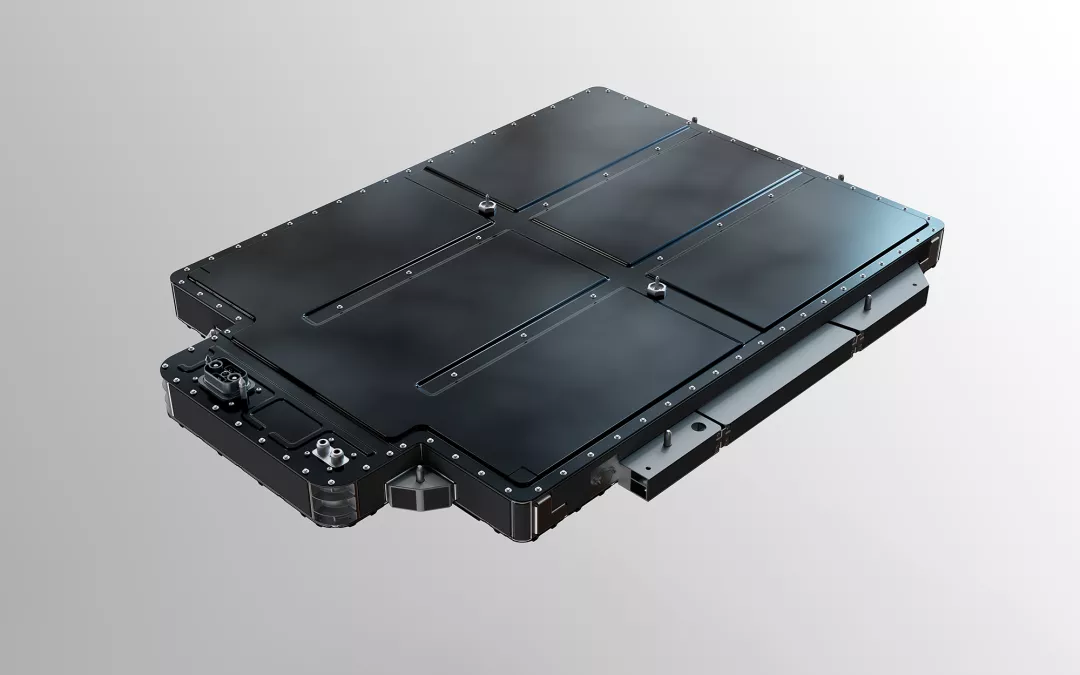
Meanwhile, the battery swapping system ensures battery health and safety for NIO car owners who have opted for Battery as a Service (BAAS). They might not worry much about the battery deterioration.
Safety is the most critical issue in the history of automotive development, especially for electric vehicles (EVs) as battery safety plays a more critical role. It has become one of the most useful functions for battery swapping stations as well.
Regarding battery safety, Dr. Shen Fei, Vice President of Power Management at NIO, stated:
“We need to look for potential hazards in every aspect of battery failure mode, diagnose and eliminate every minor potential hazard in the diagnostics on the vehicle and at the swapping station, so that the significant risks can be eradicated.”
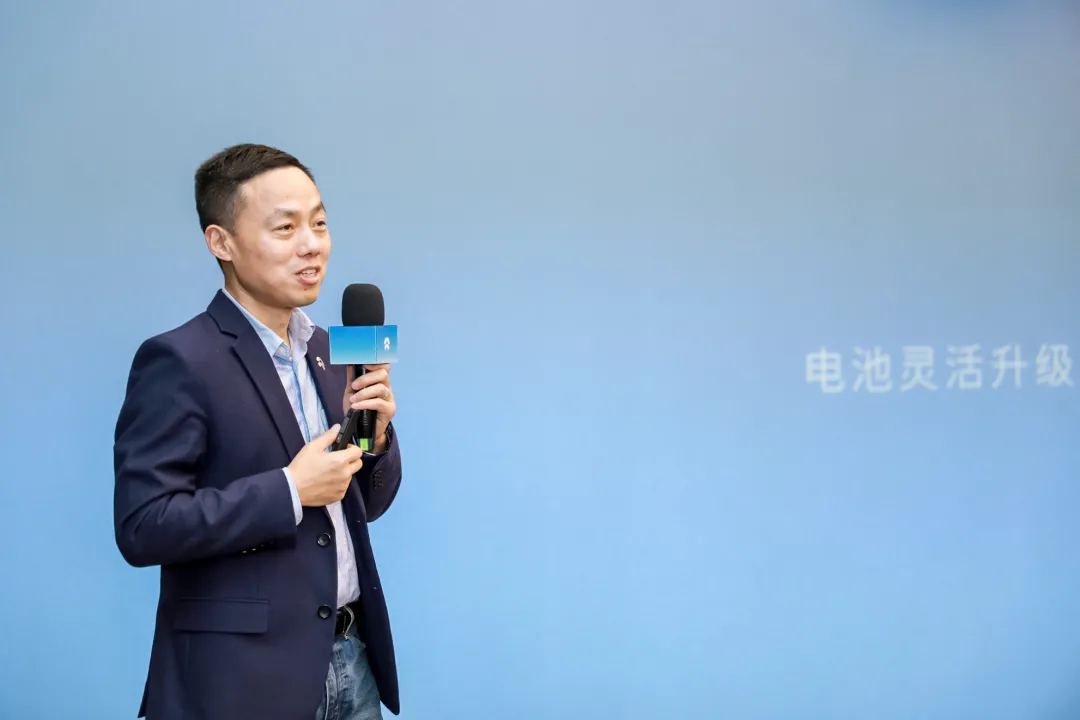
Lastly, we come to the issue of battery recycling.
At present, most battery packs for EVs are arranged flat on the chassis. If the vehicle chassis sustains serious impact, the battery pack may be damaged. Therefore the swapping and fast recycling capabilities become more critical. Of course, this is only a few isolated circumstances.
According to CCTV, the first batch of power batteries on new energy vehicles in China has already entered the “retirement period.” How should retired batteries be handled? Basically, retiring batteries means retiring cars, and removing the battery packs is a daunting task.
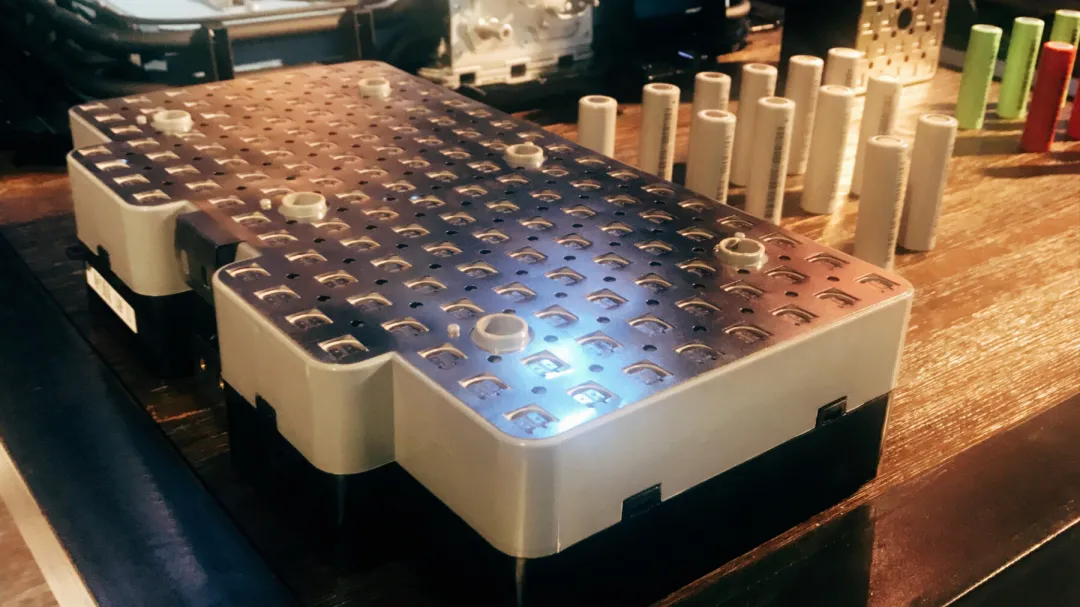
However, the battery swapping system has improved the efficiency of “battery retirement” significantly.
Of course, swapping batteries is only part of NIO Power. “Charging EVs is more convenient than filling gas” remains the goal, and significant progress has been made. According to NIO officials, 40% of car owners have “Electricity Zone Home”(within 3 kilometers of the battery swapping station). Some car owners have indicated that their home charging piles have been gathering dust.
Data can reflect everything.
As of December 5, 2021, NIO Power statistics are as follows:
689 battery swapping stations, including 146 high-speed swapping stations.
526 Supercharging stations with 2990 charging piles.
600 Destination charging piles with 3319 charging piles.
More than 430,000 third-party charging piles have been accessed.
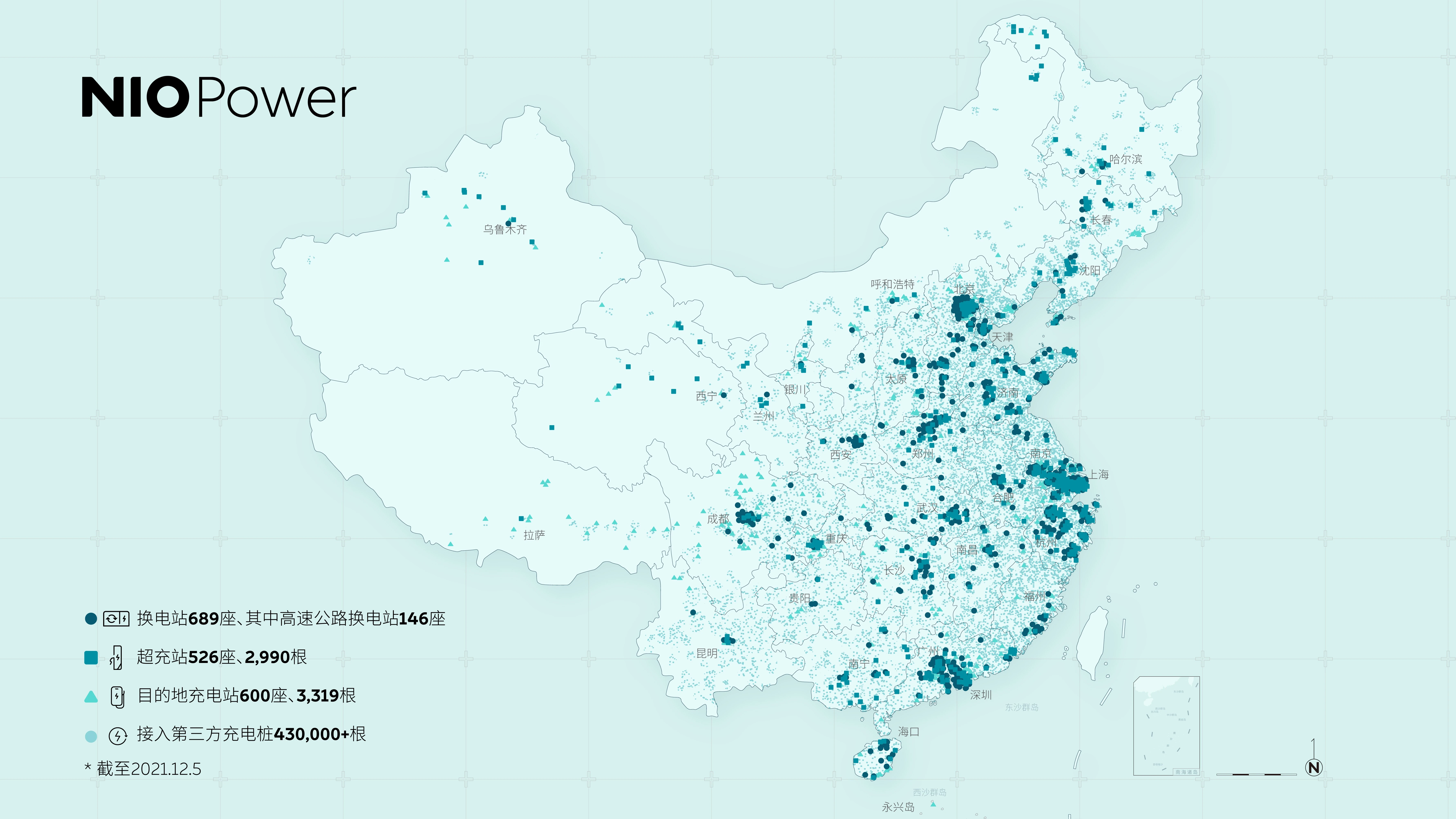
This is only the beginning. By the first half of 2022, NIO plans to increase the number of battery swapping stations to 1,100.I remember at the 3rd anniversary of NIO Power, Dr. Shen Fei gave himself a score of 29 points, as 29% of users were living in “electricity zone houses” at the time. By 2025, NIO plans for 90% of users to have “electricity zone houses”.
In addition, long-distance travel and travel to remote areas are also areas NIO is continuously working on. Compared to 2018, it is much less difficult to drive a NIO to places like Xinjiang, Tibet, and Heilongjiang.
In places where there is no access to NIO Power, “Jiadian” has emerged. This may be the most user-friendly charging app in China, covering most public charging stations.
However, such a comprehensive energy system is only a small part of NIO’s entire system today.
Versatile
Let’s first take a look at this picture.

This picture comes from an eight-page PPT made by NIO’s founder Li Bin, President Qin Lihong and Executive VP Zhou Xing during the A+ round financing of NIO in 2015.
Breaking it down, this represents automotive brand 1.0.
This is equivalent to the pre-internet era, where people’s demand for cars was simply a tool for transportation. Core competitiveness of brands was the hardware of the vehicles, this also gave rise to events such as F1 and Le Mans as tests to the quality of the car. For automakers, the focus was more on production and achieving cost reduction and efficiency.
In the 2.0 era, cars are no longer just transportation tools, and the focus of the automotive industry is gradually shifting towards intelligence. Core competitiveness has also moved towards software.
Tesla is the representative automaker of the 2.0 era.
For example, Tesla cut off millimeter-wave radar on all its models in North America and instead, adopted a pure vision solution. They achieved intelligent driving and automatic parking, and did it better. The most direct manifestation of hardware reduction is cost reduction, while algorithms are a win-win situation. Tesla’s rain sensors are also achieved through front cameras and algorithms, rather than traditional sensors.
Tesla has also changed the sales model of automobiles, which has remained unchanged for nearly a century. From dealer sales to direct sales, this has also prevented Tesla from selling in all states in the US. China’s auto industry has gone through 30 years of development, but it was not until Tesla entered the market that consumers learned that car prices could be so transparent.
NIO combines a company’s human resources, manufacturing, R&D, business model innovation, digital management, etc., to explore the automotive 3.0 era. And it can be summarized into four aspects: car, service, digital experience, and lifestyle. The focus is on users.
So what has NIO done in the past 6 years?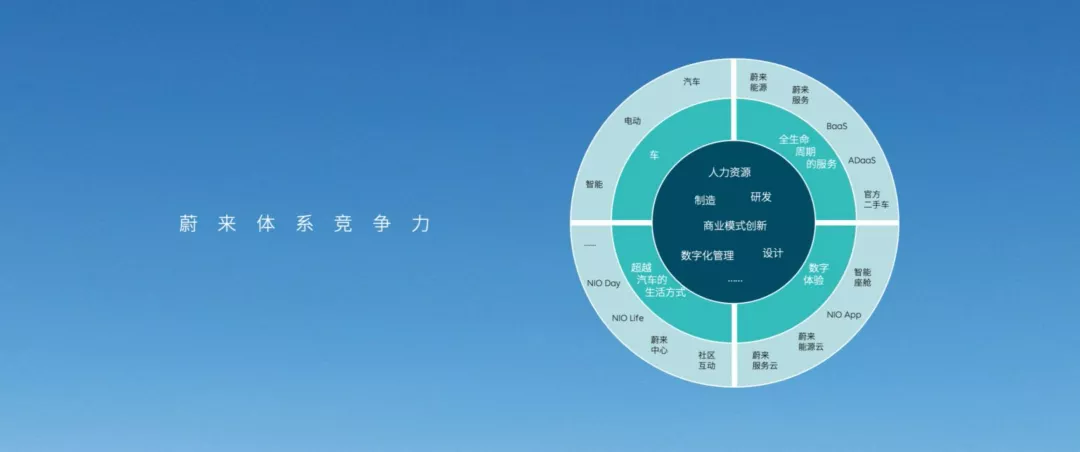
The four aspects presented in NIO’s PPT in 2015 have now been fully implemented and proven effective. NIO has also unveiled its strategic compass for the first time.
Firstly, the car is undoubtedly the most important product for a new company like NIO.
In terms of power, NIO has its own XPT power solution which is self-designed and self-produced. XPT has achieved good results, with a total power output of 480 kW for the NIO ET7, with the front motor outputting 180 kW and the rear motor reaching a peak power of 300 kW. Additionally, NIO has conducted battery research and development, launched a 75 kWh lithium iron phosphate battery pack, and is currently building a new Neo Park factory, among others.
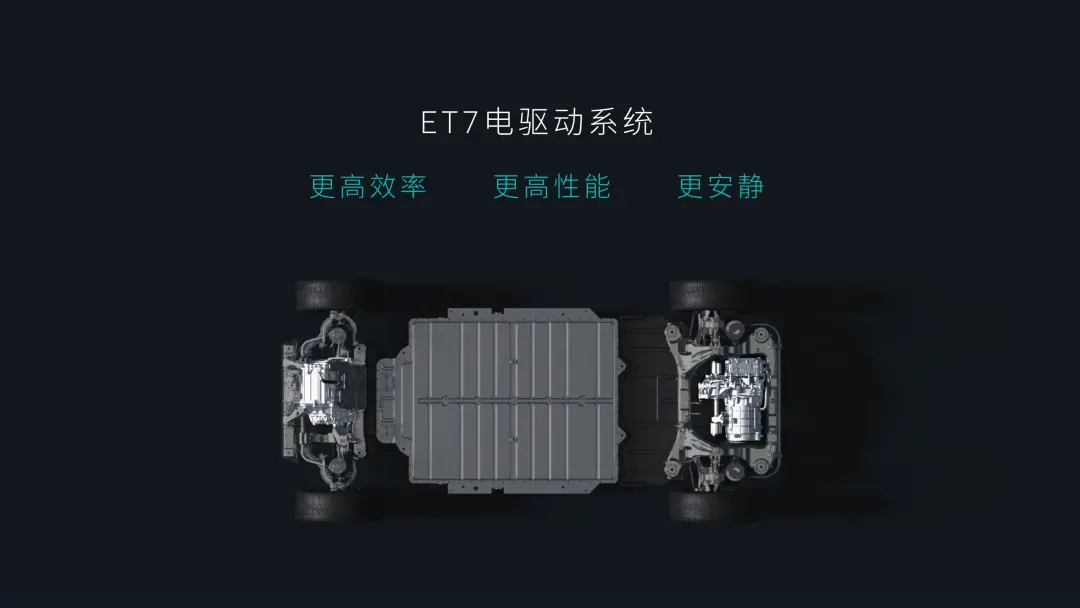
Apart from cars, NIO’s full lifecycle services have also attracted more users. Starting from the purchase of a car, direct sales have demonstrated advantages in terms of transparent pricing, standardized services, and a much better car-buying experience compared with traditional 4S dealerships.
NIO’s services, BaaS (battery leasing), ADaaS (NIO’s subscription mode for the next stage of intelligent driving) and official used cars have all given users more choices and services throughout all stages of car usage. Previously, car companies have tended to sever their relationships with buyers after a car is sold.
NIO has even established a user trust, which was created by Li Bin when he listed the company by donating 50 million shares of NIO’s stock as a charitable trust. Today, it is worth billions of yuan and can do a lot for users and society. Recently, the trust paid for each user to receive a hammer after the heavy rain in Zhengzhou, and invested in handicrafts with the Cultural Village, which were sold on NIO Life, gradually building up community culture and driving local economic development.
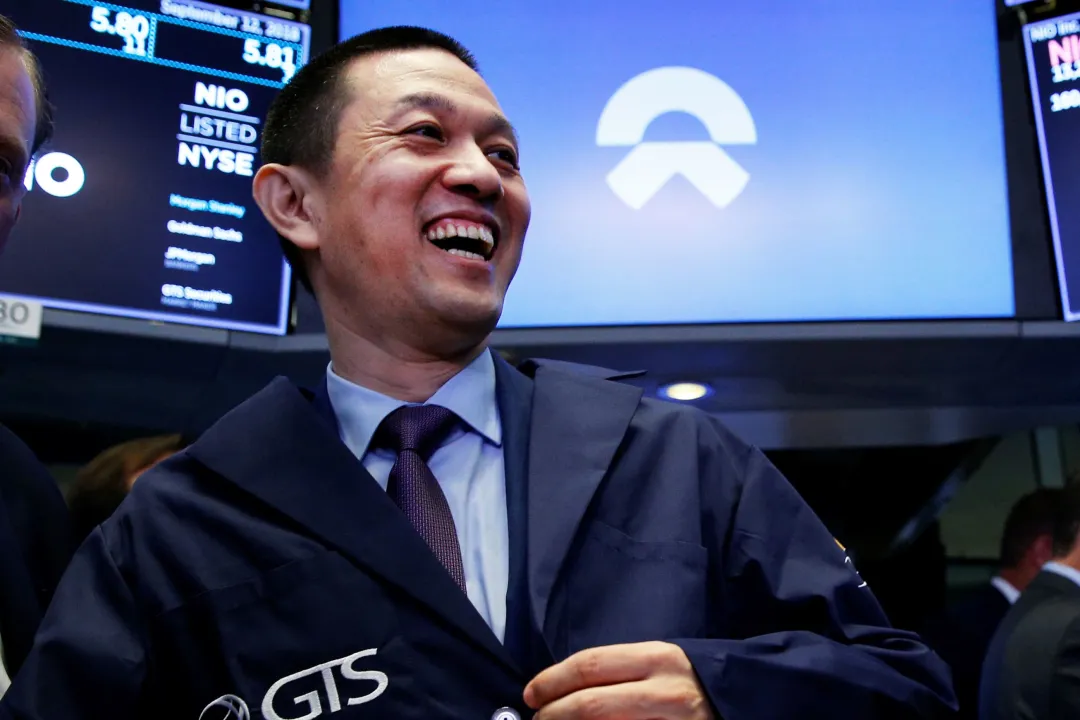
There is also NIO Power, mentioned before, which is only a small part of NIO’s full lifecycle services, but has solved many problems. In fact, this is very similar to JD.com’s logistics system. When JD.com was founded, it was an e-commerce company, but Liu Qiangdong found that the poor shopping experience was due to the logistics system, so JD Logistics was born. Now, JD.com’s success is inseparable from the establishment of its logistics system.
Qin Lihong sees NIO’s charging and swapping system in the following way:
Today’s car companies that produce fuel-driven cars are extremely proud, saying “we are very convenient, have long range, and no range anxiety.” I think this is not because the car companies have done well, but because the oil companies have done well.The third point is digital experience. In the future, when discussing a car, simply talking about the chassis, steering, and performance may not be enough. More intelligent scenarios can be applied, including intelligent cabins, intelligent driving, energy cloud, and app communities, among others.
Talking about apps, NIO’s app can be said to have the best user experience among car companies’ online communities. Of course, this is also due to NIO’s dedicated operation strategy, which provides users with the latest information on the app first, rather than through the media.
However, there are pros and cons to such a community. This year’s seat problem and the selling price of used cars have been the subject of heated discussions among users, which have also had some impact on NIO. But NIO will continue to prioritize improving the user experience. Qin Lihong also stated that, regardless of how busy he is, Li Bin spends half an hour every day sending red envelopes and interacting with NIO’s car owners on the app.
This is also the embodiment of NIO’s current efforts to expand its advantages in differentiation: to go beyond automobiles and create a way of life.
This includes NIO Day, NIO House, and NIO Life, all of which have been heavily invested in by NIO. The cost of NIO Day reaches millions of RMB each year, where users are invited to participate. The first event in 2017 was even held via chartered airplanes and stayed in five-star hotels. The event attracts nearly ten thousand people, including suppliers, partners, employees, car owners, and media. Even the venue for NIO Day was chosen by users through voting, which has never happened in traditional car companies.
Even at the end of 2019, when NIO faced a huge crisis, NIO Day was held as scheduled.
Similarly, NIO House has become a gold mine for NIO. Almost all NIO Houses are located in the busiest commercial areas, and the NIO House in Norway is even situated at Karl Johans gate 33, the end of which leads to the Royal Palace in Oslo.
NIO House not only provides users with a gathering place but also carries the brand’s promotion and construction. These are things that cannot be reflected on the balance sheet in a short period of time.Of course, there is also NIO Life, which is closest to each of us. Today, NIO Life covers food, drinks, fashion, furniture, sporting goods, travel bags, technology and more. It’s hard to imagine that this is something a car company does. Higher quality and collaborations with famous designers have enabled NIO Life to go further. In the future, NIO Life may become an independent brand and rise to new heights.
In the NIO ecosystem, cars, services, digital experiences, and lifestyles all make NIO stand out and represent its best distinguishing features. Even more impressive, this ecosystem is constantly expanding and reaching more places.
By now, you may realize that NIO may be similar to Apple in many ways. When you visit an Apple store, you’ll find not only products, peripherals, and accessories, but also painting courses that even 70-year-old grandmothers can easily learn. When you purchase an iPhone or Mac, you will receive tutorials in your email, and you can even call the staff to ask how to use the functions. Each account has an iCloud that allows you to communicate across devices. This is the charm of systematic integration.
When it comes to today’s NIO, Qin Lihong said it best: “What matters is whether we have the qualifications for future profitability, not how much we have gained today.”
NIO Day 2021 will be held on December 18, another grand event for NIO’s users. What surprises will NIO bring us this time?
This article is a translation by ChatGPT of a Chinese report from 42HOW. If you have any questions about it, please email bd@42how.com.